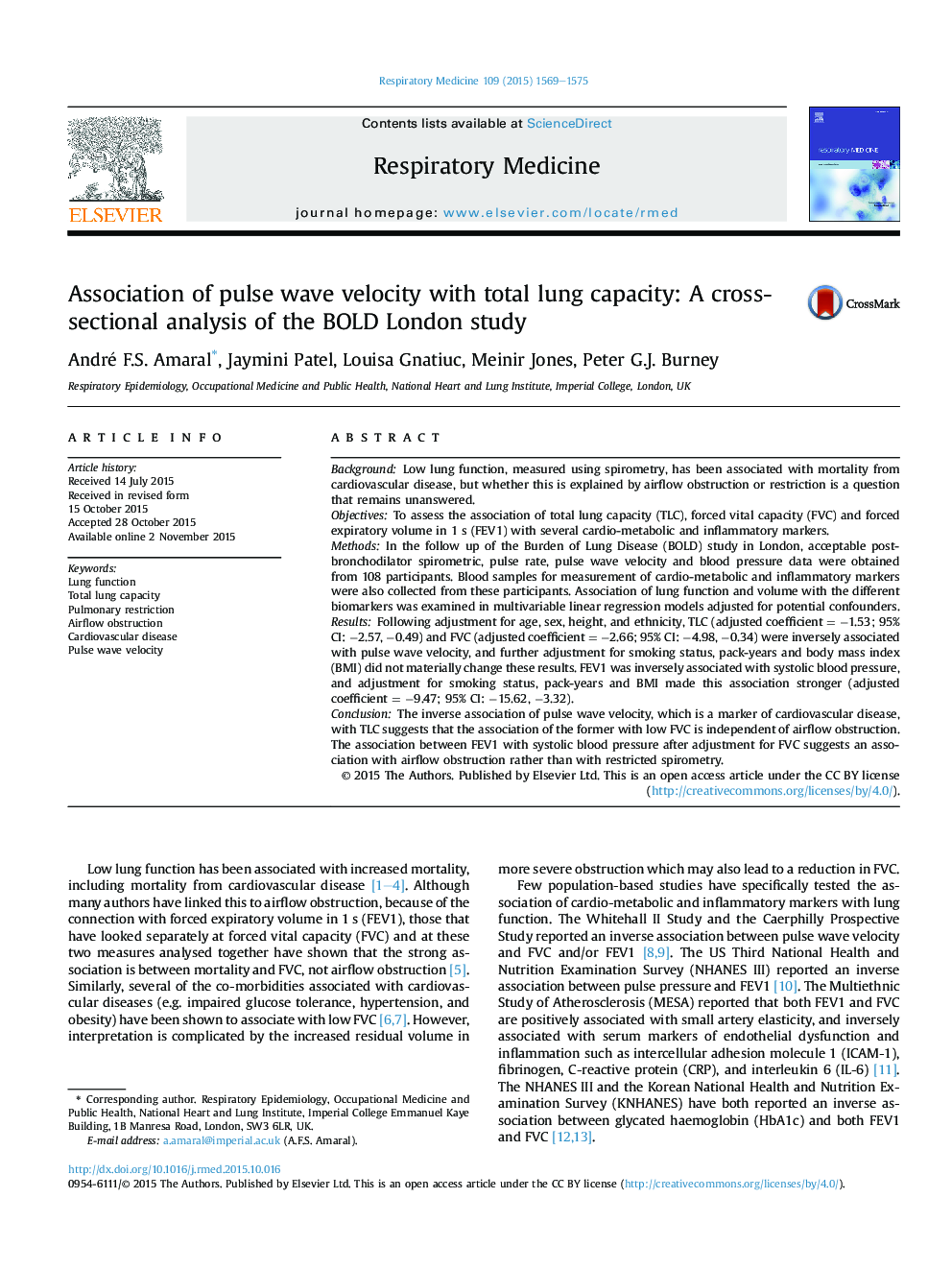| کد مقاله | کد نشریه | سال انتشار | مقاله انگلیسی | نسخه تمام متن |
|---|---|---|---|---|
| 6241438 | 1280551 | 2015 | 7 صفحه PDF | دانلود رایگان |

- TLC is inversely associated with pulse wave velocity (i.e. arterial stiffness).
- FVC, which is a proxy for TLC, is also inversely associated with pulse wave velocity.
- Systolic blood pressure is inversely associated with FEV1.
BackgroundLow lung function, measured using spirometry, has been associated with mortality from cardiovascular disease, but whether this is explained by airflow obstruction or restriction is a question that remains unanswered.ObjectivesTo assess the association of total lung capacity (TLC), forced vital capacity (FVC) and forced expiratory volume in 1 s (FEV1) with several cardio-metabolic and inflammatory markers.MethodsIn the follow up of the Burden of Lung Disease (BOLD) study in London, acceptable post-bronchodilator spirometric, pulse rate, pulse wave velocity and blood pressure data were obtained from 108 participants. Blood samples for measurement of cardio-metabolic and inflammatory markers were also collected from these participants. Association of lung function and volume with the different biomarkers was examined in multivariable linear regression models adjusted for potential confounders.ResultsFollowing adjustment for age, sex, height, and ethnicity, TLC (adjusted coefficient = â1.53; 95% CI: â2.57, â0.49) and FVC (adjusted coefficient = â2.66; 95% CI: â4.98, â0.34) were inversely associated with pulse wave velocity, and further adjustment for smoking status, pack-years and body mass index (BMI) did not materially change these results. FEV1 was inversely associated with systolic blood pressure, and adjustment for smoking status, pack-years and BMI made this association stronger (adjusted coefficient = â9.47; 95% CI: â15.62, â3.32).ConclusionThe inverse association of pulse wave velocity, which is a marker of cardiovascular disease, with TLC suggests that the association of the former with low FVC is independent of airflow obstruction. The association between FEV1 with systolic blood pressure after adjustment for FVC suggests an association with airflow obstruction rather than with restricted spirometry.
Journal: Respiratory Medicine - Volume 109, Issue 12, December 2015, Pages 1569-1575